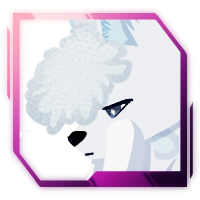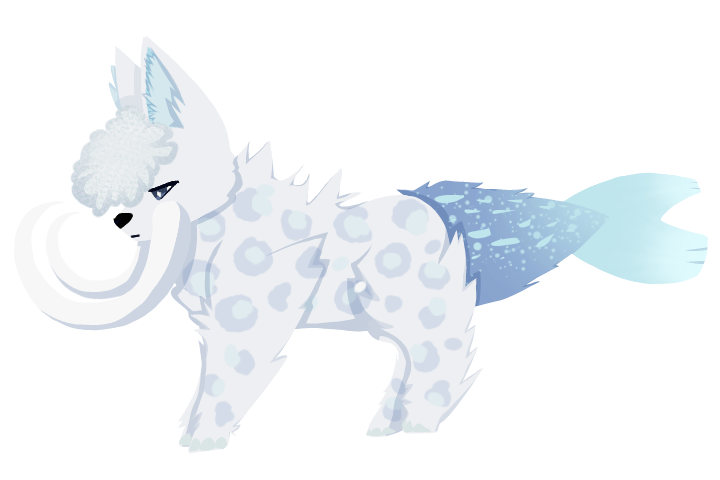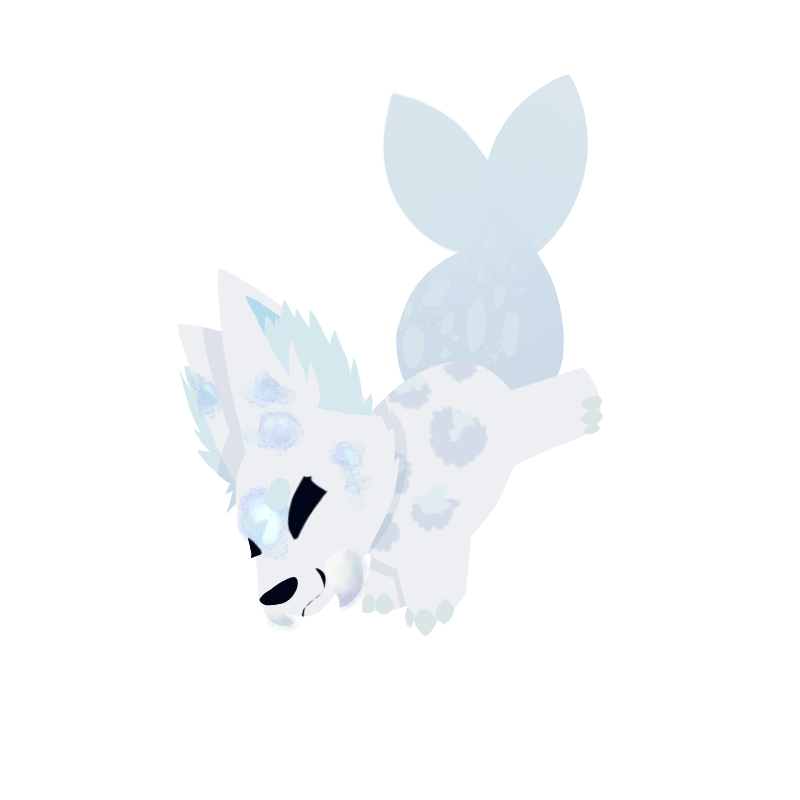 Hielpixes
Hielpixes
Wild Fauna

A reserved and elegant creature that hails from the colder regions of Poltera. Hielpixes have several coats of thick fur which gives them a bulk that betrays their speed- thin legs carry them quite quickly across the snow and ice.
Their thick fur can have different patterns, the most common being pure white and rosette markings, others including tiger-like stripes and spots. It's a popular pattern on thick winter coats!
Wildlife scientists have observed Hielpixes of many different temperments- most are generally quite calm, even friendly at times, though make no mistake- they can be as aggressive and tempermental as any wild animal. So although they may be cute, you should think twice about wanting one as a pet...
In summer they camouflage in snow. They shed fur in autumn, leaving only the black layers of fur visible. It is thought that they evolved to get as much warmth as possible during winter, making their fur black to absorb as much sunlight as possible. They tend to stay hidden in caves in winter nights, only coming out at day.
Most Hielpix have dark eyes, running the gamut of black, brown, or dark gray. The males of the species have longer tusks for displays of strength against others when competing for mates- These impressive tusks that never stop growing get frosted over time, being used to break through ice in their way. Commonly you might find a Hielpix weighed down by ice bits clumped up into their fur as a result of this behaviour.
Males have less ice stuck to them due to the fights they have between each other getting it off them. On the contrary, females try to get as much ice stuck to their fur to seem more intimidating and compensate for their shorter tusks.
Baby Hielpixes

Hielpix cubs have been affectionately nicknamed Icepi by softbots, after a set of baby Hielpixes shot into popularity on the net thanks to videos posted by a large zoo in Iceveinia of two recently born Icepi playing and snuggling together. Curious and attention-seeking, they attempt to play with zoogoers and keepers alike, and even in the wild they will approach nature photographers (Though photographers must be very wary, as a watchful adult might not be far behind them...!).
Icepi don't open their eyes until they're 16 to 20 months old.
Playful and competitive, they're often seen trying to stand on their front legs as long as they can to see who has the best balance. This doesn't seem to have any effect on how the Icepi is seen by their peers, but instead is a form of bonding.
Created by Sadcat